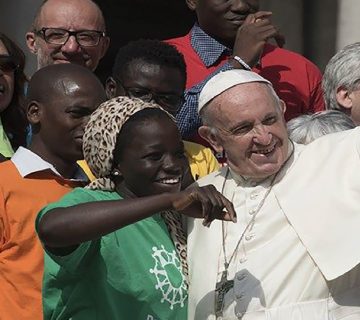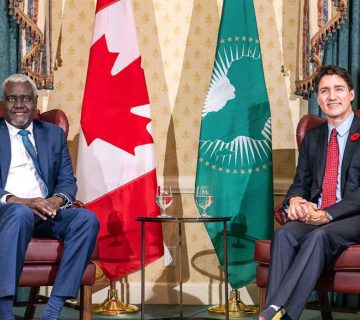The Democratic Republic of Congo (DRC) has a bewildering history of violence and instability, especially in the east of the country, particularly North Kivu Province. On June 4, 2019, for instance, 25 people were reportedly killed there. Deputy Mayor, Modeste Bakwanamaha, identified the attackers as members of the armed group, Allied Democratic Forces (ADF). The Kivu, where there are more than 120 armed groups, serves as the epicenter of this continuous wave of conflict. The international community and the government have looked at Disarmament, Demobilization and Reintegration Programs (DDRPs) as a possible solution, but these have not yet achieved the desired result, which is why region-led initiatives should be explored.
The United Nations (UN), for example, has started multiple DDRPs, according to the UNDDR Resource Center, to contribute to security and stability post conflict, allowing for recovery and development of the society. The process of taking ex-combatants through a DDRP is a complex one with political, military, security, humanitarian, and socio-economic considerations. More armed groups are willing to lay down their arms, including Forces Aremees de la Republique Democratique du Congo (FARDC – Armed Forces of the Democratic Republic of Congo), whose commander, Nyatura Kavumbi, surrendered on April 2, 2019, in Kirumbi (Masisi). This willingness, coupled with DDRPs, make a peaceful and secure region seem like a plausible future. However, the existing DDRP is not fully functional, and such efforts have not led to sustainable peace and security. This is worrisome, because without an alternative means of livelihood, it is unlikely that members of these armed groups would willingly lay down their arms, or do so for good.
President Felix Tshisekedi has announced that he would rotate troops who had been serving in the area for a long time. Unfortunately, any progress on the government’s end is being undermined by three factors. First, instead of going through the process of disarming, there are groups that are using their good contacts with the FARDC to bolster their positions. The Nduma Defense of Congo (NDC), for example, has expanded its areas of jurisdiction, and improved its munitions. Secondly, those who are willing to lay down weapons – which takes away their means of livelihood – are often left without an alternative way to earn a living. The National Disarmament, Demobilization, and Reintegration Program has not been accepting any new candidates for the past few years. This means that those who surrender are either taken into military camps with the chance of joining the army, or given simple demobilization kits, then let go (released). Finally, there is a lack of trust by the locals in the programs. This distrust is strengthened by the fact that FARDC kills captured commanders. These factors have complicated the implementation of such programs.
Since the people of DRC appear to be more receptive to the aid offered to them by Regional Economic Communities (RECs) such as the Southern African Development Community (SADC), a SADC-run DDRP will be more effective and efficient than UN-run DDRP, in North Kivu.
UN-Run DDRP
The most recent DDRP effort by the UN was launched in 2015, following the adoption of two Resolutions, 2098 and 2147. The program was praised for introducing two new dynamics, repatriation, and resettlement, to better address the complicated nature of the presence of armed groups in North Kivu. This approach was geared towards the promotion of a successful program, with the aid of the UN Stabilization Mission (Mission de l’Organisation des Nations Unies pour la Stabilisation en République Démocratique du Congo, MONUSCO). The program would overcome the challenges faced by its predecessors (2004 and 2009 respectively), paying close attention to skill enhancement training and self-sustenance. By July 2016, DRC’s government had successfully reinserted thousands of ex-combatants back into the society. The World Bank and Sweden donated USD 15 million and USD 7 million respectively to the cause, but the donation was not enough to complete the program as the problem of armed groups persists.
The lack of success of the existing DDRP can be attributed to, first, the logistical support system. While the above mentioned program recognized the need for more funds, it faced a major hurdle – that of lack of commitment. Different external entities who pledged funds were reluctant to pay fearing that the program would fail. Secondly, the DRC government was not fully efficient and effective in implementing the program, in part because of corruption (which diverts resources). Thirdly, the internal political climate was not favorable. The then President, Joseph Kabila, was being accused of attempting to stay in power through a manipulation of the law. This political instability threatened to undo all the progress made by the DDRP.
Fourthly, some armed groups took advantage of the UN-led DDRP to identify and recruit more members into their ranks. These groups were quick to exploit the distrust of the locals in foreigners’ DDRP activities to create fear in the community. As a result, the activities of armed groups such as ADF increased in eastern part of DRC (North Kivu Province). In summary, the failure experienced by the UN-run DDRP was due to the lack of sufficient funds, the inefficiency and ineffective implementation of programs by the government, an unstable internal political climate, and lack of trust in the UN by the locals. As the problem of armed groups in DRC continues to exist, alternative means of dealing adequately with these groups should be found. One such option could be the Southern Africa Development Community (SADC).
The Southern African Development Community DDRP Option
With the objectives of achieving development, peace, security, economic growth, and alleviating poverty while enhancing the living standards of the people of Southern Africa, the matter of conflict in North Kivu is of interest to the SADC bloc and its 14 member states (Mozambique, Angola, Democratic Republic of Congo, Seychelles, Zimbabwe, South Africa, Botswana, Tanzania, Malawi, Lesotho, Mauritius, Madagascar, Namibia, and Swaziland). Some of these countries (have) host(ed) Congolese refugees, for example.
The development of a DDRP program led by SADC is viable because, first, it would be going hand in hand with the visions of both UN and AU. In Article 4 of the 2002 AU Constitutive Act, AU’s core mandates are the stability, peace, and security of Africa. Furthermore, the formation of the AU from the OAU (Organization of African Unity) was facilitated by three ideas: that Africa required unity, the movement to find African solutions to the continent’s problems, and the belief that a united Africa would be much stronger when on global platforms such as the UN.
Secondly, since DRC joined SADC in 1998, the REC has been involved in a number of sustainable peace and security interventions that have ranged from that of the regional blocs or communities, coalition of some member states, to the involvement of singular states. All through this, the REC has been accepted and trusted by the locals because, among other reasons, it is more ‘homegrown’ compared to other out-of-continent-based initiatives.
Third, SADC enjoys the advantage of proximity as compared to UN. The member states are all part of the same security complex, meaning that they share closely linked security concerns. The national security of one state cannot be considered in isolation from another. This is beneficial because the nature of this relationship ensures that the countries near DRC, have a vested interest in the sustenance of peace. Furthermore regional communities such as SADC who are closer to the conflict can easily identify when tensions in an area are rising and respond quicker than an international organization.
The change of strategy in matters of security by UN is in tangent with the legal framework of the AU which allows for such action by a REC. Secondly, the success of SADC in peace and security interventions in the area have earned them (the SADC members) the trust of the Congolese people. Finally, SADC has vested interest in the security, stability and prosperity of one of its member states due to the shared security complex. A SADC-run DDRP would be more efficient and effective than the current UN-led one in the North Kivu Province. DRC should explore such a region-led DDRP to help end the cycles of armed conflict and violence in the Province, and in the country.
Raudhat Sayeeda Saddam, Research Department, the HORN Institute.
Photo: DR Congo Exploring the Potential of Region-Led Disarmament, Demobilization, And Reintegration Programs (Photo Credit: Map Logs)



